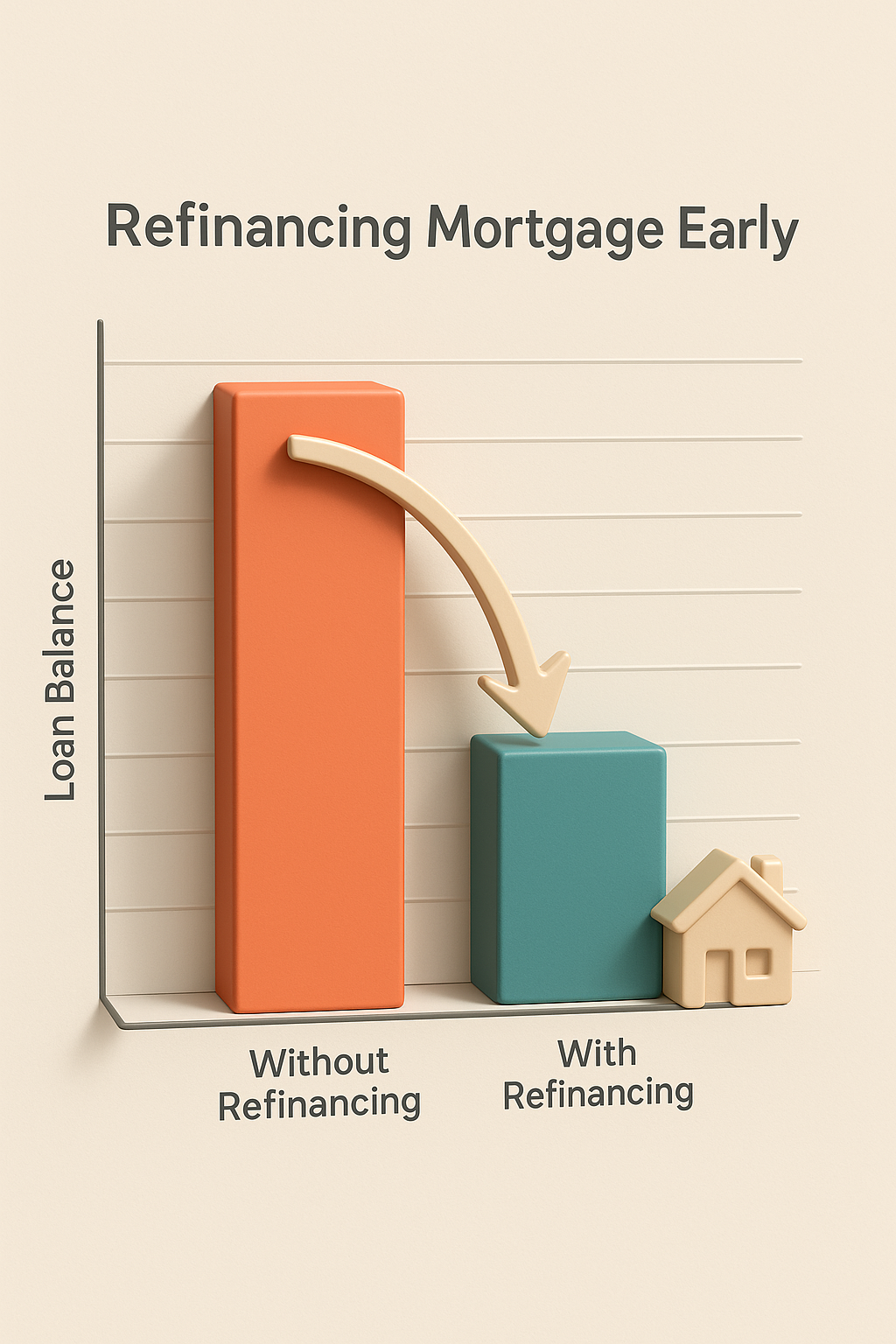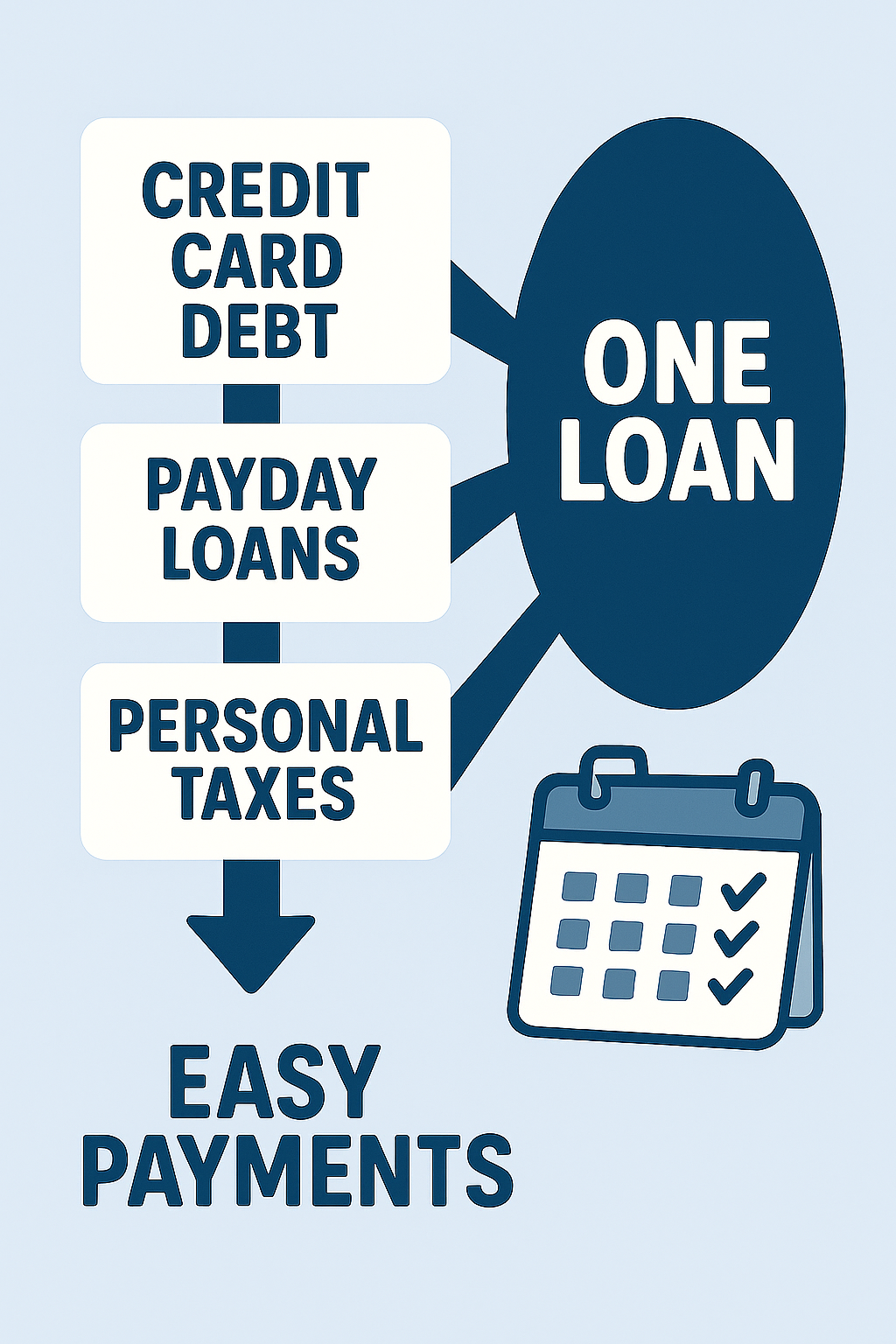Table of Contents
ToggleA Helpful Guide on Steps to Take the Moment You Receive a Foreclosure Notice in Ontario
First, Understand What You Received (In 20 Minutes or Less)
In Ontario, most lenders use Power of Sale rather than full foreclosure. Your envelope may include:
-
Demand Letter / Notice of Default: “Bring arrears current within X days.”
-
Notice of Sale Under Mortgage Act: Triggers a redemption window (often ~35–45 days, varies) to reinstate or redeem.
-
Statement of Claim: Commences court action (timelines and consequences escalate).
Fast rule: The earlier the stage, the more you save. Every week of delay increases interest, legal fees, property expenses, and risk to equity.
Step 1: Capture Deadlines & Request Reinstatement/Redemption Figures (Day 0–1)
1A) Calendar the Critical Dates
-
Highlight every deadline mentioned.
-
Add calendar alerts 7 days, 3 days, and 24 hours before each cutoff.
-
Note where and how payments must be made (bank draft, wire, trust account).
1B) Call the Lender’s Lawyer (Same Day)
Ask for two figures in writing:
-
Reinstatement amount: Arrears + legal fees + costs needed to bring the mortgage current.
-
Redemption amount: Full payout of the mortgage (principal, interest, penalties, fees) to stop Power of Sale.
Phone Script (short):
“Hi, I received a foreclosure/Power of Sale notice on [property address]. I need the reinstatement and redemption amounts in writing, with per-diem interest and a payment deadline. Please email them to me at [email]. Thank you.”
Email Template:
Subject: Reinstatement/Redemption Figures – [Your Address]
Body:
Hello [Law Firm/Lender],
I received a foreclosure/Power of Sale notice for [address]. Please provide written reinstatement and redemption statements, including per-diem interest, wire/bank draft instructions, and exact deadlines.
Thank you,
[Your Name], [Phone], [Email]
Why this matters: You can’t choose the best path to reinstate, refinance, or sell—without exact numbers and dates.
Step 2: Stop the Bleed—Stabilize Taxes, Insurance, and Utilities (Day 0–2)
-
Property Taxes: If unpaid, contact the municipality. Tax arrears can prime the lender and add pressure. Ask for current balance and payment options.
-
Home Insurance: Keep coverage active. Lenders may force-place insurance at a higher cost, increasing what you owe.
-
Utilities & Condo Fees: Keep services on and condo fees current. Condo corporations can lien the unit; utilities preserve property condition and buyer appeal.
Outcome: You prevent additional claims and protect property value—critical for refinancing or a strong sale price.
Step 3: Build Your “Fast File” for Lenders & Buyers (Day 1–3)
Create one organized folder (digital + paper):
Property & Mortgage
-
Latest mortgage statement
-
Notice of Sale / legal letters
-
Property tax statements
-
Condo status (if applicable)
-
Insurance policy
-
Any prior appraisals or CMAs
Personal & Income
-
Photo ID
-
Income proof (pay stubs, T4/T1, bank deposits; for self-employed: NOAs, statements)
-
Monthly budget (see Step 7)
Debts
-
Credit cards/loans list with balances, limits, and interest rates
-
Any collections or judgments
Why now: A clean file cuts days off underwriting and helps you beat redemption deadlines.
Step 4: Pick a Track—Reinstate, Refinance, or List for Sale (Day 2–7)
You now have firm numbers and a tidy file. Choose the path that maximizes equity and fits your timeline:
Track A) Reinstate (Fastest if Arrears Are Small)
-
Pay arrears + fees to bring the mortgage current.
-
Ask the lender to confirm in writing that the Power of Sale steps are paused/withdrawn.
-
Consider requesting temporary forbearance (interest-only or partial payments) if income is recovering.
Best for: Short-term hardship; you want to stay, and your budget can carry the regular payment going forward.
Track B) Refinance (1st, 2nd, or Private)
If arrears are large or the current lender won’t help, refinancing can stop the process and reset payments.
Common Ontario routes:
-
Private 1st or 2nd mortgage: Equity-driven, fast approvals. Useful when credit is bruised or income is complex.
-
B-lender switch: Flexible on ratios/credit; higher rates/fees, but stabilizes the situation.
-
Debt consolidation: Roll high-interest debts to lower cash-flow pressure.
Milestones to hit quickly:
-
Same-day appraisal order (rush if necessary)
-
Lawyer selected for payout statement handling
-
Commitment signed with a clear funding date before the redemption window closes
Best for: You want to keep the home, have sufficient equity, and need a fresh start on terms you can afford.
Track C) List for Sale (Proactive, Equity-Protective)
Selling before the lender sells lets you control marketing, pricing, and timing—often yielding higher net proceeds than a lender-driven sale.
Do it right, quickly:
-
Hire a REALTOR® experienced with urgent files.
-
Choose a pricing strategy (as-is vs. light touch-ups).
-
Set a go-to-market date within 5–7 days.
-
Your lawyer coordinates payouts on closing and terminates Power of Sale.
Best for: Tight timelines, limited refinance options, or a desire to capture maximum equity and move on.
Step 5: Execute Funding or Listing with Firm Milestones (Week 1–3)
If You’re Reinstating
-
Confirm exact amount and deadline.
-
Use verifiable payment methods (bank draft, wire).
-
Get written confirmation that the file is brought current and that legal steps are halted.
If You’re Refinancing
-
Appraisal complete within 48–72 hours (rush if needed).
-
Commitment in hand with clear conditions (photo ID, income proof, title insurance).
-
Lawyer receives payout statement from existing lender.
-
Fund before the redemption window ends.
Pro tip: If your new lender needs a few extra days, your broker/lawyer can sometimes negotiate a short extension with the lender’s lawyer—if you show real progress (appraisal done, commitment signed, closing booked).
If You’re Listing to Sell
-
Sign the listing agreement and seller disclosure.
-
Launch marketing (professional photos, floor plan, quick cleanup).
-
Review offers with a target firm closing that meets your lender’s timeline.
-
Ensure the lawyer has all payout letters to discharge the mortgage and stop Power of Sale at closing.
Step 6: Coordinate Legal, Payouts, and Closing (Pre-Closing Week)
Your real estate lawyer is your closer. They will:
-
Pull title search, verify liens, and request payout statements (mortgage, taxes, condo arrears, judgments).
-
Work with the buyer’s lawyer or the new lender’s lawyer to exchange funds.
-
Discharge the existing mortgage and confirm cancellation/withdrawal of Power of Sale proceedings.
-
Provide a final trust ledger showing where every dollar went (important for your records and credit rebuild).
Your job:
-
Respond same-day to all doc requests.
-
Confirm moving logistics (if selling).
-
Keep insurance until the exact moment of transfer.
Step 7: Reset Your Credit & Cash Flow for the Next 12 Months (Post-Closing)
Credit Repair Plan (simple, effective):
-
Payment history first: Never miss a due date. Automate payments.
-
Utilization: Keep revolving balances under 30% (ideally <10%).
-
New credit: Only if needed—consider a secured card to create a clean history.
-
Dispute errors: Check both Equifax and TransUnion; correct outdated legal notations.
Cash-Flow Plan:
-
Build a 3-bucket budget: Essentials, Debts, Cushion.
-
If you refinanced, avoid “payment creep.” Any surplus goes to the emergency fund first.
-
Aim for 3 months’ living expenses.
-
Revisit mortgage strategy at 6 and 12 months to move toward A-lender eligibility if possible.
Ontario-Specific Tips That Save Time & Money
-
Act inside the redemption window. It’s your best leverage to reinstate, refinance, or sell on your terms.
-
Tenants remain protected under Ontario law—coordinate notices properly if you sell (your lawyer/REALTOR® will advise).
-
Municipal tax arrears and condo liens can complicate payouts—tackle them early.
-
Document everything (emails, receipts, bank drafts). If there’s a dispute over amounts, records help your lawyer resolve it fast.
FAQ
Q1: Can I actually stop a Power of Sale after I get the notice?
A: Often yes. You can reinstate (arrears + fees) or redeem (full payout) before the sale closes. Refinancing or selling proactively can resolve it, too.
Q2: How quickly must I decide?
A: Immediately. Many notices give weeks, not months. Order appraisals, get reinstatement/redemption statements, and choose a track within the first 7 days.
Q3: Should I wait for the bank to list the property?
A: Waiting usually erodes equity via accumulating fees and carrying costs. Listing early lets you control price and marketing—often netting more.
Q4: What if my credit is bruised?
A: Private and B-lenders prioritize equity and cash flow. You can often refinance, stop the process, and then graduate back to better rates in 12–24 months.
Q5: Will I owe money if the sale price is too low?
A: Possibly. If proceeds don’t cover what’s owed plus fees, lenders may pursue a deficiency. Another reason to act early and control the outcome.
Practical Checklists
Same-Day Triage (60 minutes):
-
Read the notice and calendar deadlines
-
Request reinstatement & redemption figures (in writing)
-
Keep taxes/insurance/condo fees current
-
Start Fast File (ID, income, mortgage, taxes, insurance)
72-Hour Action:
-
Choose Track A/B/C (reinstate, refinance, list)
-
If refinancing, order appraisal & pick a lawyer
-
If selling, sign listing & set launch date
-
Ask the lender’s lawyer about extensions only if you can show real progress
How We Help (Ontario Focus)
We coordinate the entire save—fast:
-
Rush appraisals + B/private mortgage options
-
Second mortgages to clear arrears/taxes while you stabilize
-
Sell-or-stay analysis to protect net equity
-
Direct coordination with your lawyer and REALTOR®
-
Clear milestones to beat the redemption window
Free, confidential consult: Bring your notice—we’ll give you exact next steps for your situation today.
Final Word
A foreclosure notice in Ontario isn’t the end—it’s your signal to act. In the first week, lock down exact figures and deadlines, choose your best track (reinstate, refinance, or sell), and move with milestones. The faster you execute, the more equity and options you preserve. If you want help building a stop-the-clock plan tailored to your notice and timelines, we’re ready when you are.
If You’re Facing Foreclosure?
Speak with one of our mortgage professionals today.
- Facts About Getting a Reverse Mortgage Before Your Home Is Paid Off - December 14, 2025
- 7 Smart Truths About Refinancing a Mortgage at Any Time (And Avoiding Costly Penalties) - December 12, 2025
- Suggested Steps to Get Approved for Mortgages After Bankruptcy in Canada - December 10, 2025






